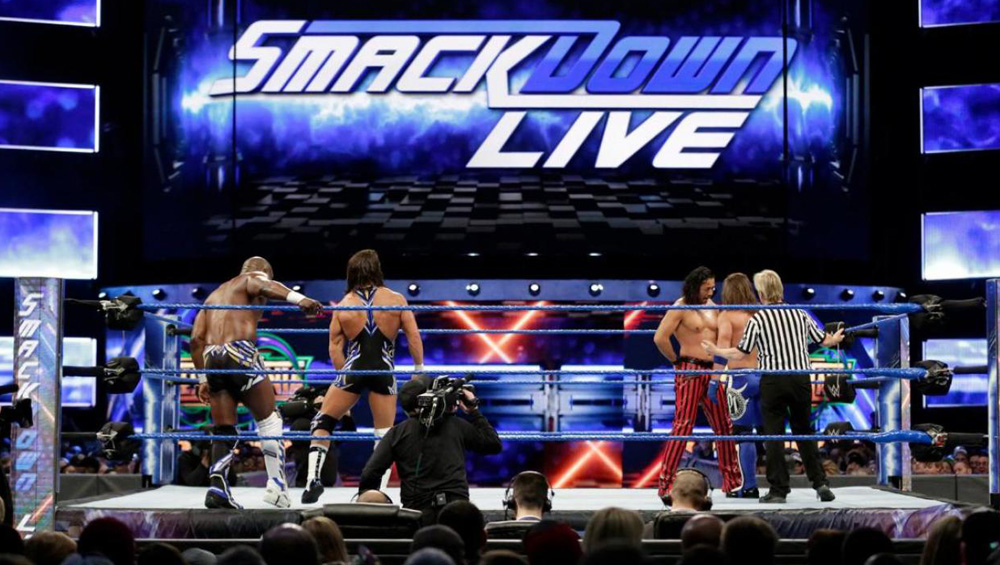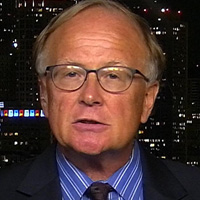
Agency Experts Handicap The Fall Season

Come Sept. 23, the broadcast networks will start rolling out their new primetime schedules, hoping to reverse recent declines in viewership or at least outperform their rivals.
Aside from the networks and producers of the shows, those with the greatest stake in the upcoming are the media agencies and their client advertisers that have placed nearly $10 billion in upfront buys in the schedules.
With the final countdown to the season underway, TVNewsCheck reached out to four media agency executives with 10 questions about key programming moves for the upcoming season. Taken together, the answers provide an expert overview of what might happen when viewers start tuning in (or not).
The execs: Brian Hughes, EVP, audience analysis practice lead, Magna Global; Michael Gambelli, VP, director of video investment at Havas Media; Nick Hartofilis, EVP, video activation at Zenith; and Brad Adgate, media consultant, who spent 17 years at Horizon Media where he served as SVP of research.
Here’s what they had to say:
Fox will begin airing WWE Smackdown Live on Fridays from 8 to 10 p.m. this fall. At its peak on cable a few years ago, it was drawing more than four million viewers but viewership has declined to about half that. How do you think it will draw on traditionally low viewing Friday nights on Fox?

Brian Hughes
Brian Hughes: This is a good move for Fox. It should outperform the scripted and unscripted series they’ve tried there in recent years, and provides 52 weeks of original programming.
Michael Gambelli: Since the time slot for Smackdown isn’t changing, moving it back to broadcast television should provide some ratings resurgence.
Nick Hartofilis: There are a few variables that will determine how this plane lands. First, the move to Friday will be initially disruptive as there was a nice fluidity playing through on back-to-back days [on cable.] However, the move to a top four broadcast network will give it a better chance to overcome that.
We also have to consider total viewing beyond live. The WWE audience is passionate and should continue interest in both flagship programs, albeit within a different view pattern.
Finally, if the product is good it will be consumed. The stories and the magnitude of talent highly dictate the success of the weekly programs. In the past, much was said about night of week and network carriage regarding Smackdown, but the overarching truth was that the quality of show was a step behind Raw.
Brad Adgate: I think the show will be compatible with Saturday nights UFC. I think it’ll be a good cross promotional vehicle for the other Fox shows as well as other live sports on Fox, like college football. As young males continue to migrate away from linear TV, if Fox has a show that can effectively reach them, it will have no worry selling it advertisers.
NBC is holding the No. 1 freshman drama in primetime television — Manifest — until mid-season. Is that a smart move?
Hughes: There’s something to be said for building anticipation, but it remains to be seen if there will be a payoff. It’s important to keep in mind that series rarely improve in their second season, regardless of scheduling.

Michael Gambelli
Gambelli: I think it could prove to be a very effective strategy — by leveraging NBC’s fall primetime schedule, including Sunday Night Football, to promote not only the show’s return in the winter, but [also] going onto their OTT platform to stream Season 1. Then hopefully you can increase the show’s audience heading into season 2. This also allows them to run the season in consecutive weeks, which is always a good thing for momentum.
Hartofilis: Risky, very risky. To pull this off, a show must not only show success but leave viewers rabidly hungry. There is so much competition for share of attention that delaying the return of a show in a fragile state of success runs a high risk of viewers forgetting. We have seen this play out before.
Adgate: I think so. The old broadcast scheduling has been thrown out the window. Also, if it leads to fewer reruns or fewer, better episodes, then why not. Less is sometimes more.
CBS will not have The Big Bang Theory on its primetime schedule for the first time in 12 years. Big Bang averaged 13 million viewers and an 18-49 rating of 2.2. Can any of the new comedies come close to filling the void?
Hughes: If we’re using 18-49 as the barometer, not likely. Young Sheldon is obviously the heir apparent and there’s a good half-a-point difference between that the next highest-rated sitcom in the lineup (1.8 vs. 1.3). It’s doubtful anything new is going to come in at the top of the scale.
Gambelli: Unfortunately, I don’t see anything stepping in to fill this void. I do think Young Sheldon will keep a respectable rating in the time slot and new comedy Bob Hearts Abishola could work well and build back a Monday night comedy presence for the network paired The Neighborhood.
Hartofilis: Likely not. Comedy is the hands-down hardest genre to duplicate past success, and it would require a game-changing concept to break through in the same way. If that shining star did appear, it would still take time to build.
Adgate: No, I seriously doubt it. The video landscape is too fragmented. The bar for a hit TV show is lowered every year. It’s even tougher for a hit sitcom
Fox has decided to expand its hit series 9-1-1 with a spinoff titled 9-1-1 Lone Star, in which the series co-creators have chosen Austin, Texas, as the locale. CBS has had very good success expanding its NCIS series with three spinoffs and NBC similarly had success with its trio of Chicago P.D., Chicago Fire and Chicago Med series. Could this be the start of something bigger for Fox?
Hughes: It’s definitely a possibility. Like the CBS and NBC shows, the format can be pretty easily adapted to other locales. You always have to be mindful of the tipping point, however — when viewers may tire of a particular premise.
Gambelli: With more new shows greenlit on an annual basis than ever before, and competition at its highest level, I agree with this programming strategy. While it should benefit from a strong initial rating due to sampling by 9-1-1 fans, the quality of show’s content will ultimately decide if it can retain these viewers. Still this familiarity from the start does give the show a slight competitive advantage. Also, Rob Lowe as the lead should give it a boost as well.
Hartofilis: If you’re going to create offspring, do it with procedurals. It’s the safest bet. Expanding a successful procedural into a franchise will give Fox a shot at needed schedule stability and depth. No roofs will be blown off, but the balance isn’t a bad thing.
Adgate: I think so because there are so many programs out there. Spinoffs, like movie sequels, will enable viewers to know what the program is about without as much promotion. But it’ll come down to ratings. There is a long and pretty successful track record with spinoffs from Law & Order and CSI to NCIS and the Chicago franchise.
The CW is adding Batwoman to its fall lineup, which boosts to nine the number of drama series on the network from Greg Berlanti. They all are relatively successful and draw a younger audience from platforms outside of the TV network. But is it wise for a network to rely so much on one producer and do ad clients have any qualms about buying ad time in so many shows from the same producer?
Hughes: This is somewhat tied in to the previous question, as it will always be tempting to continue expanding on something that is working. I think each client is unique in terms of its needs, so even though so many shows are helmed by the same producer, there may be ones among them that are suitable for a certain brand, and others that aren’t. Each show really has to be judged on its own merits.
Gambelli: Generally, it’s always a good thing to put an acclaimed EP, producer, writer, director, etc., behind a show when presenting it to a client. It gives everyone a little more confidence in a new show. Other networks have had success with this strategy — i.e., Chuck Lorre [CBS], Shonda Rhimes [ABC] and Dick Wolf [NBC].

Nick Hartofilis
Hartofilis: I don’t know that buyers are spending too much time thinking about this one. CW has always been a more focused play and consistency in that is not a bad thing. Consistency of production is correlating with consistency of experience and audience. That’s not to say there is not a downside here. Lack of diversity limits reach potential, which can become risky over time as audiences age and erode.
Adgate: With Netflix and others signing up showrunners Shondra Rhimes, Ryan Murphy, etc., it can be risky. But he’s been so successful that I don’t know how CW can turn down projects from Berlanti.
Also, since he is so successful, Berlanti has gained a lot more negotiating leverage with the network. I think CW should sign him up to an exclusive agreement. I know Dick Wolfe works with NBC a lot, Chuck Lorre with CBS, and, years ago, Aaron Spelling with ABC, but I don’t think they’ve ever had the number of shows on the same network that Berlanti has.
ABC’s Dancing with the Stars is in serious viewer decline after 27 seasons on the air. At its peak, the show averaged 20 million viewers and a 4.8 18-49 rating. Last season it averaged 4.5 million viewers and a 0.6 18-49 rating. Is it still a viable ad buy and how much longer can the show sustain a spot on the ABC primetime schedule?
Hughes: The average 18-49 rating in broadcast prime is less than a 1.0, so while Dancing might not be what it once was, it’s all relative. If we were to look at older demo breaks, or certain strategic targets, the show might be a lot more attractive than the standard 18-49 comparison implies. All the more reason to be focused on a particular brand’s consumer target.
Gambelli: It’s a show that still carries a level of cachet in a safe family environment, so it’s still a viable ad buy from my perspective. However, you would have to imagine another similar lackluster ratings performance might lead to the show being canceled. The economics of sustaining enough dollar volume per :30 won’t make sense for ABC. I think it’s very important that they get a compelling cast of stars in order to drum up some interest in this upcoming season. Maybe even some sort of a reformat or new twist since it’s been on the air so long — i.e. All Stars.
Hartofilis: Taking a breather in the spring wasn’t a bad move. Now being further removed from last season, let’s see if that replenishes interest. I would predict this year to be the last hoorah. The show has total viewers but aged considerably over time. I don’t know that enough new viewers will come in to make a material difference. There needs to be new buzz, specifically noteworthy stars that people care about.
Adgate: It really depends on if ABC has something better in development. The show was never popular with young adults, so the audience loss has been primarily with older adults, never a popular target with marketers. It could be a matter of time. Nonetheless, it has had a great run.
NBC has said about 83% of its primetime schedule for the 2019-20 season will be first-run episodes. Is this a trend the ad community likes and is it something all the networks should continue?
Hughes: It’s a tricky thing. With the sheer volume of content available to the average consumer today, it’s obviously a positive thing to have fresh programming available year-round. But it’s also more expensive to keep the schedule in first-run episodes, and those costs will ultimately be passed on to advertisers. At the end of the day, as long as the additional costs are commensurate to the value you’re getting from the additional original content, we’re in favor.
Gambelli: This is absolutely something that the ad community loves. I certainly hope all networks adopt this strategy. In today’s extremely fragmented landscape with tons of other viewing options, the falloff from original episodes to repeats is going to be more drastic than ever. The viewer is simply going elsewhere once they identify a program is in repeat.
Hartofilis: In general, we of course want to access the highest quality product for our dollar. So, from an advertiser standpoint, you want the quality to be a constant as the pressure of sales performance is a constant. Holding audience through weeks that have been traditionally eroded with repeats is a definite good thing provided that the economics are justified. From a competitive standpoint, it’s also a good move to try and maintain share of attention or grow it against your core competitors.

Brad Adgate
Adgate: I think so. It’s too competitive, so having more original shows makes sense. Plus, with streaming video and VOD as options viewers can watch the older telecasts on those platforms instead of reruns, which are low rated.
ABC is leading off Thursday nights with still solid veteran series Grey’s Anatomy which drew close to seven million viewers per live-plus-same-day episode last season and a 1.7 18-49 rating. But the network is also bringing back A Million Little Things and How to Get Away with Murder, which drew C3 audiences of 4.3 million and 2.8 million, respectively, and 18-49 ratings of 1.2 and 0.95. With Thursday nights being so important for key ad categories, is ABC making a mistake by not pairing Grey with some better dramas?
Hughes: How to Get Away with Murder has become a Thursday night fixture, so I can see why they’d be reticent to move it. And, the only drama besides Grey’s that is outperforming A Million Little Things on ABC is The Good Doctor, which is their Monday anchor. So I understand their rationale here.
Gambelli: No. A Million Little Things experienced a ratings lift when it was moved to Thursdays last season. Grey’s also saw a bump from this programming shift. How to Get Away with Murder does remain a bit of a question mark at 10 p.m.., but not enough to label this as a mistake.
Hartofilis: I could not identify clear-cut alternatives to lead-out when you consider genre and relocation risk. Displacing a show that has developed a fan base in its own time slot runs the risk of disrupting its trajectory. It will also weaken the night that it exits.
Yes, Thursday is an important night for key advertiser categories, but given the already daunting challenge of creating successful shows that stick, I believe both networks and advertisers are very concerned with total viewership and having more successful programs to choose from.
Adgate: You can make that argument, but with on-demand and binge viewing on the rise, I think there is less emphasis on Thursday night with marketers.
Every season there seems to be one primetime series that tends to do better than expected and surprises the ad community. If you had to predict, which series would it be for this coming season and on what network?
Hughes: Ratings being what they are, we typically use renewal as the criterion for new series success. We built a model that takes into account a number of characteristics and predicts which shows are most likely to be renewed. Here’s our current top five candidates for next season: All Rise (CBS), Batwoman (CW), Mixed-ish (ABC), Nancy Drew (CW) and Stumptown (ABC).
Gambelli: I think CBS comedies present the strongest candidates. Judging by time slot, CBS has high hopes for Unicorn. However, as I mentioned before, I like Bob Hearts Abishola also on CBS. I think it’s a topical show with undertones of immigration and diversity, but done in a feel-good way. It’s also programmed to the right network audience, with a star, Billy Gardell, who had a successful history on the network with Mike & Molly. And it’s in a time slot with opportunity, as DWTS and The Voice have been a steady decline and feel played out at this point.
Hartofilis: Not a real dark horse pick but I think Prodigal Son will exceed expectations in its first season. Psychological thrillers with a somewhat new twist have a good track record to attract early sampling and Fox plays well in this lane. The talent is also strong, which leads me to believe it will have a good shot.
Patricia Heaton starred in two long-running broadcast network sitcom hits — Everybody Loves Raymond on CBS and The Middle on ABC — both which ran for nine seasons. Now she is returning to CBS with a new sitcom titled Carol’s Second Act. What are the odds that this too will be a hit?
Hughes: A mentor of mine once said “stars don’t make shows, shows make stars,” and I still subscribe to that. Ultimately, the series will succeed or fail based on whether viewers connect with it, and not because of who’s in it.
Gambelli: It’s hard to bet against her, especially since she is back on CBS, which probably has the best success rate.
Hartofilis: History would tell you that the odds are against you third time around if you were lucky enough to tally two wins. If Carol’s Second Act proves to be a good show starring Patricia Heaton, success. If the show proves to be Patricia Heaton in Carol’s Second Act, then the winning streak will be snapped.
Adgate: I think the chances are good since she’s well liked, well known and, as she gets older, CBS is a good network to be on.


































Comments (0)